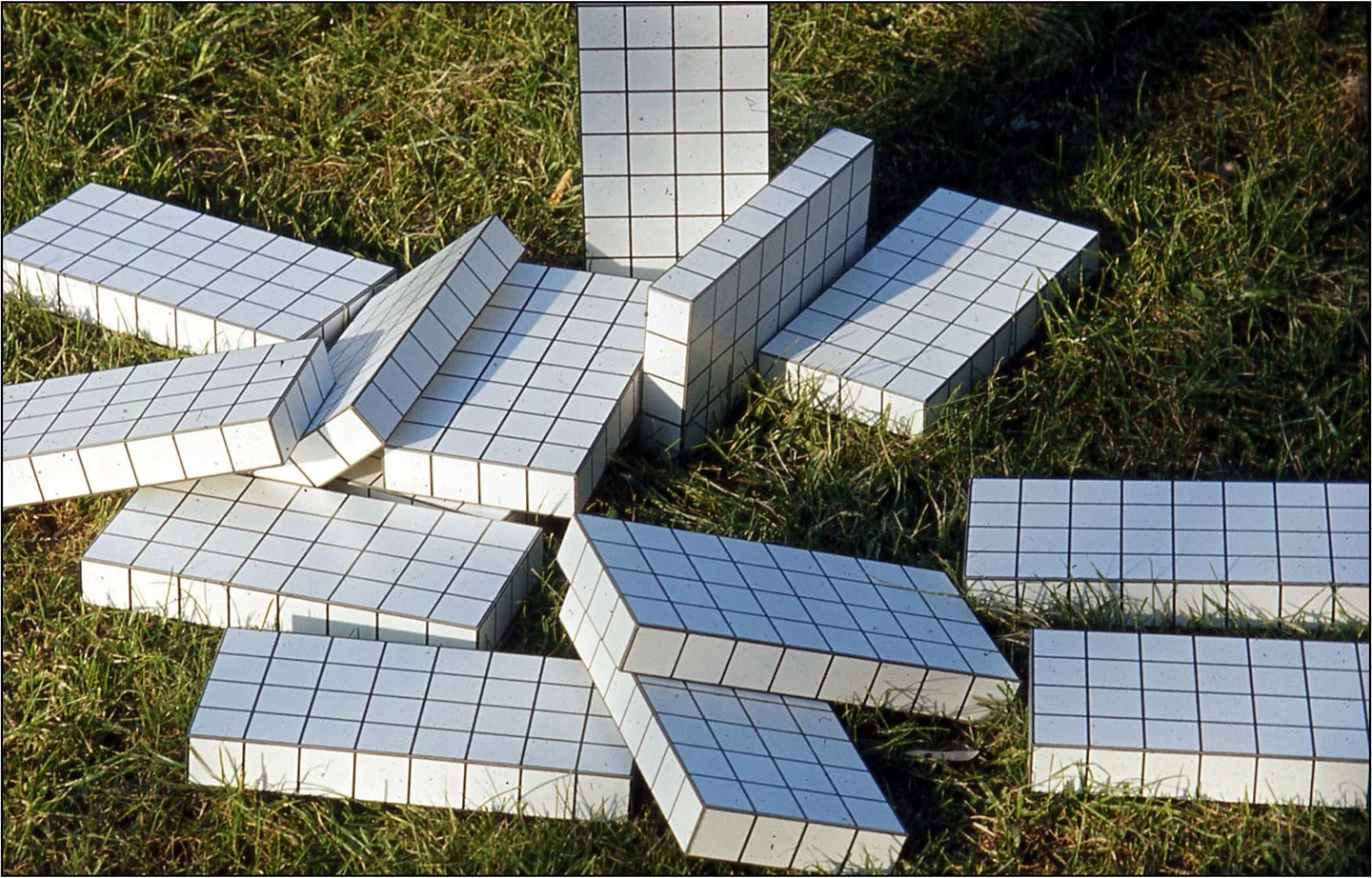geometric experiment
The Quaderna Dining Tables, designed by Superstudio for Zanotta, embody the radical design movement of the 1970s. Born from a time when traditional design and functionality were challenged, these tables capture Superstudio’s vision of a world built upon an endless geometric grid: a concept first introduced in their provocative “Istogrammi” and “Continuous Monument” projects. Rejecting conventional aesthetics, the Quaderna Series presented furniture as an extension of space, an “artificial landscape” free from traditional limitations.
Founded in Florence in 1966 by Adolfo Natalini and Cristiano Toraldo di Francia, Superstudio quickly became influential within the radical architecture movement. Their experimental work embraced rigorous geometric forms, dismantling the prevailing functionalist dogma. Introduced in the groundbreaking 1969 exhibition “L’invenzione della superficie neutra,” the Quaderna tables (2600 and 2830) distilled this radical approach into functional objects characterized by precise squared white laminate surfaces.
Zanotta, always forward-thinking and experimental, started producing the Quaderna in 1972. Each table combines advanced industrial techniques and meticulous craftsmanship. The checkered laminate, digitally printed and precisely applied by hand, demands extraordinary accuracy, ensuring continuity across every surface. This meticulous process preserves Superstudio’s original vision, making each table a handcrafted masterpiece.
Today, the Quaderna Dining Tables remain more than furniture, they symbolize an era that challenged convention and championed visionary thinking. Exhibited worldwide, they embody Superstudio’s revolutionary philosophy, seamlessly merging architecture, design, and social critique, as well as Zanotta’s commitment to turning bold ideas into lasting design icons.
Table. Honeycomb core structure coated with white plastic laminate, digitally printed with black squares at 3 cm spacing.
What we are talking about here are the terrible kids of Superstudio. In other words, in a given time in history when everything had to be criticized and rethought, in a season when the Italian architecture was passionate and which is now a myth, a group of young students wished to change the world from Florence and definitely managed to leave their mark, at least in our world, the design world. They began with the ‘constant monument’ idea, which wrapped up everything such as a squared magma, continued with the ‘histogram of architecture’, which generated without any effort furniture and ambiences whose “Super-surface was a mental attitude model,” and then finally arrived at the ‘Super-idea’, which beats time with a constant regularity, deliberately written in black and white, conceptually revealed and theoretically closed, eventually generating the Quaderna collection, the most architectural items ever seen in the long history of furniture, which Aurelio Zanotta was ready to turn into a myth. Zanotta starts producing Quaderna with the courage of a brand that always wants to experiment and has an eye for staying ahead of the times: it will follow the Neomodern and Postmodern wave with Alchimia and Memphis between the 70s and80s.































